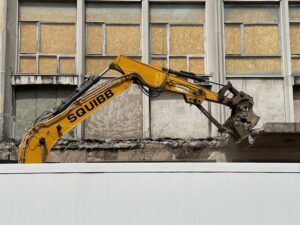Who is a member?
Our members are the local governments of Massachusetts and their elected and appointed leadership.

When planning for new municipal buildings, cities and towns should also focus their attention on the old buildings being left behind, whether they’re destined for reuse, sale or, in some cases, demolition.
When planning for a new municipal building, the focus is typically on the design, function and completion of the new structure. But the disposition of the existing building — whether through sale, demolition or re-commissioning for alternative use — is also important.
Failing to address the future of the old structure early on can lead to costly and time-consuming issues down the line. From a risk management perspective, ongoing maintenance of the building being replaced must be considered during its final years in service, as well as the critical disposition following construction of the new building.
Planning phase
When planning the construction of a replacement building, it is important from the outset to conduct comprehensive feasibility studies, including funding sources and cost allocations, to address what will happen to the existing structure.
“In recent years, we’ve seen many municipalities delay decisions about an old building, or sometimes change plans mid-construction,” said Stephen Batchelder, vice president of Claims Operations and Risk Management at MIIA. “This can cause an array of logistical challenges as well as financial burdens on the town.”
Batchelder recommends initiating meaningful discussions and transition planning well before construction begins, and maintaining open communication throughout the process.
A lack of plans for an old, existing building can also present local political challenges, said Thomas DePaulo, vice president of Operations at MIIA. Sometimes residents or elected officials have an emotional attachment to a particular building — particularly schools.
“This can cause unneeded controversy and lead to stressful town hall politics that can often be lessened or avoided with proper advance planning,” he said.
During construction
A common issue during the construction of new buildings is the neglect of the building that is being replaced. While attention shifts to the new facility, the old structure typically is vacant and requires a modification of coverage from replacement cost to actual cash value — meaning municipalities could be exposed to significant financial risks if something goes wrong.
Aging and vulnerable infrastructure, if not properly maintained, can suffer from issues like water damage, structural failure or other costly losses.
“Municipalities should ensure that facilities management practices remain a priority for the old building throughout the construction process to avoid large losses and, in turn, negatively impacted loss ratios,” Batchelder said.
Project completion
Once the new building is nearing completion, it’s important to consult with the municipal property insurance provider to ensure a smooth transition to the new insurance policy. Typically, the insurer will need time to thoroughly inspect the new facility before it can be added to the policy, so this step should occur well before completion, Batchelder said.
The end of the project is also the stage when municipalities often face their biggest challenges.
“If no plans have been made for its future, vacant and decommissioned properties can become an insurance challenge,” Batchelder said. “Because of the nature of the risk, we must often look to a specialty market to provide coverage in order to protect the pool, and this is exponentially more expensive, with fewer coverage options.”
Vacant properties are also more vulnerable to theft, vandalism and other hazards, further complicating the municipality’s insurance risk profile and increasing costs.
DePaulo mentioned a recent case where town meeting resistance to decommissioning a local school building led to the town being forced to maintain it, including erecting a fence around the property, implementing building winterization, and paying for maintenance several times per week. Because the building was aging, vacant and near the coastline, no carrier would cover it, and the town was forced to self-insure.
“The longer a building sits vacant, the more the condition worsens, and it becomes more likely that it will have to eventually be torn down,” he said.
Proactive measures
The decommissioning of municipal buildings requires careful planning and risk management from the beginning of the process, and planning for the old building should run concurrently with construction of the new one. By addressing the future of the old structure early on, maintaining facilities management during construction, and ensuring timely inspections and transitions, municipalities can avoid unnecessary financial and logistical burdens.
Written by Jennifer Ranz